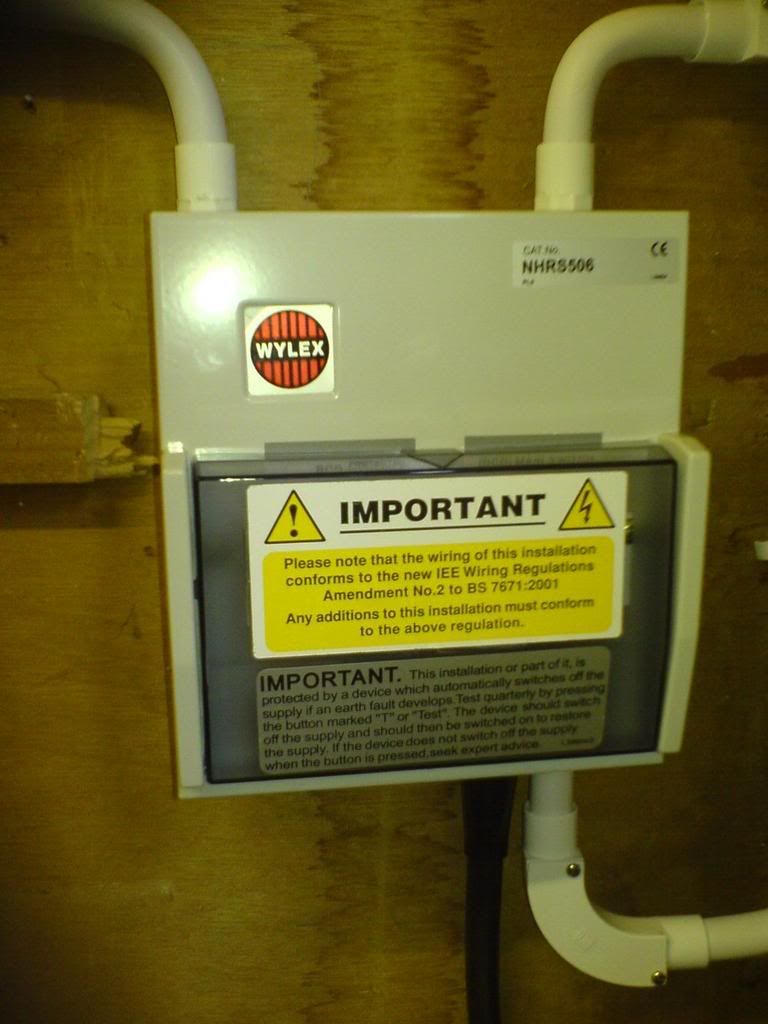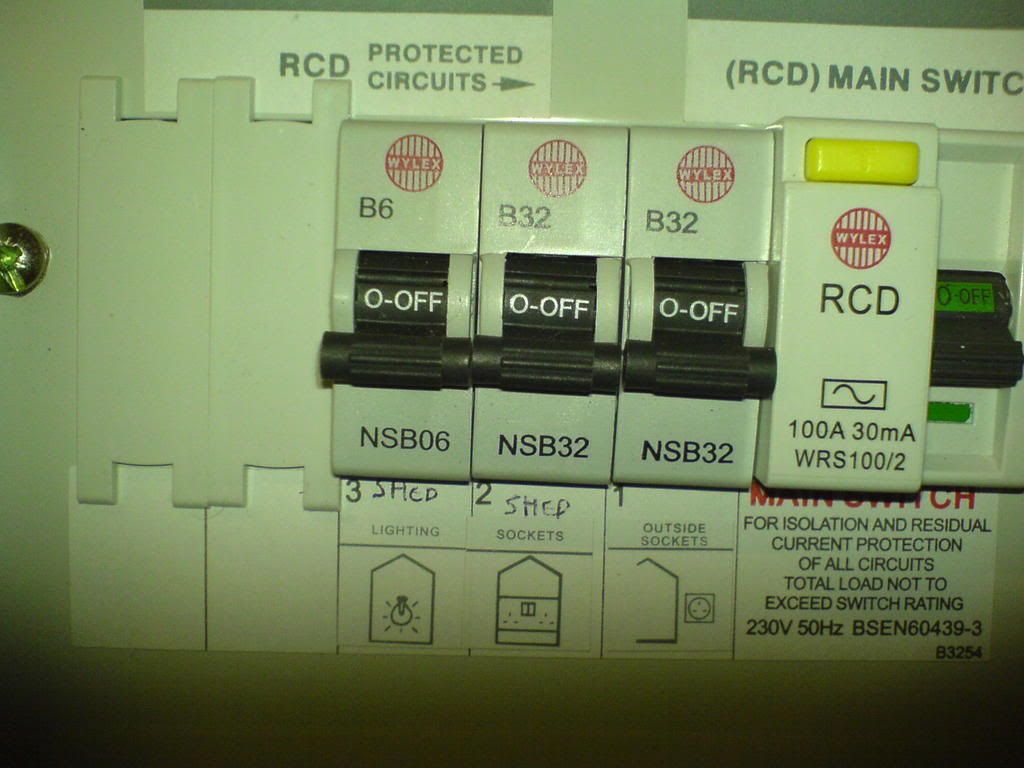I am going to run power to the summerhouse which I have had put up at the top of the garden. The length of the SWA which would run to the summerhouse from the shed, will be appox. 40m in length.
The summerhouse would be fed from the non RCD side of the shed CU, by SWA to a RCD CU in the summerhouse.
The load in the summerhouse would be some lights inside, some energy saving outside bulkheads (maybe 2), a heater (2Kw) in the summerhouse, some socket outlets used for low power items (i.e. radio, laptop), & a double outside socket used for a waterfeature & it would also be used to plug in the strimmer.
The shed is feed by 6mm SWA on a 40amp MCB in the house CU. The load in the shed at the moment is: a 5ft fluro in the shed, an energy saving bulkhead outside above the shed door, shed ring circuit used for a heater (2Kw) in the shed & low power items (i.e. radio, chargers for cordless tool batteries, a outside power ring circuit used for: a pond pump, a set of 3 lv pond lights, a set of 6 lv side path lights, a set of 6 lv post lights (in front of the veg patch wall), a infrared patio heater light (1Kw) & outside shed socket (only used in the summer for the 2 laptops or for my 110v transformer used for my drill).
I was thinking of using 4mm SWA to fed the summerhouse, the length of the run would be appox. 40m, to run from the shed to the summerhouse, by running up the shed side of the garden, then in front of the veg patch wall, & then up trough the veg patch wall & into the summerhouse.
All of the summerhouse SWA would be under the ground, apart from where it comes out of the shed & where it goes up the veg patch wall a few meters to go into the summerhouse.
My questions are:
Will 4mm SWA be ok for the length of the run
What size MCB should I use in the shed CU for the summerhouse feed
The summerhouse would be fed from the non RCD side of the shed CU, by SWA to a RCD CU in the summerhouse.
The load in the summerhouse would be some lights inside, some energy saving outside bulkheads (maybe 2), a heater (2Kw) in the summerhouse, some socket outlets used for low power items (i.e. radio, laptop), & a double outside socket used for a waterfeature & it would also be used to plug in the strimmer.
The shed is feed by 6mm SWA on a 40amp MCB in the house CU. The load in the shed at the moment is: a 5ft fluro in the shed, an energy saving bulkhead outside above the shed door, shed ring circuit used for a heater (2Kw) in the shed & low power items (i.e. radio, chargers for cordless tool batteries, a outside power ring circuit used for: a pond pump, a set of 3 lv pond lights, a set of 6 lv side path lights, a set of 6 lv post lights (in front of the veg patch wall), a infrared patio heater light (1Kw) & outside shed socket (only used in the summer for the 2 laptops or for my 110v transformer used for my drill).
I was thinking of using 4mm SWA to fed the summerhouse, the length of the run would be appox. 40m, to run from the shed to the summerhouse, by running up the shed side of the garden, then in front of the veg patch wall, & then up trough the veg patch wall & into the summerhouse.
All of the summerhouse SWA would be under the ground, apart from where it comes out of the shed & where it goes up the veg patch wall a few meters to go into the summerhouse.
My questions are:
Will 4mm SWA be ok for the length of the run
What size MCB should I use in the shed CU for the summerhouse feed






